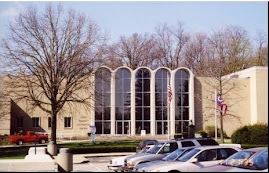You may have seen this article in the Repository this week about our plans to have our collection of Ida McKinley's dresses treated by a professional textile conservator. I wanted to take a moment to explain why conservation costs so much.
Conservators are highly skilled individuals who have embraced a very, very tedious career choice. This work takes months to complete -- sometimes even years!
Cleaning and repairing artifacts is not as simple as what you would do at home if something broke. Museum collections are held in the public trust, so we are obligated to care for them in a way that will preserve them for generations to come. We have to choose wisely and carefully WHO we let work on these projects, because a botched restoration can completely destroy an artifact.
We have estimated that each dress will cost approximately $5000 to conserve. Some will cost more, some will cost less, depending on the amount of work required to repair them. Although we have not yet had a professional conservator come in to assess our collection, we based this figure on previous work that had been done on one of Ida's gowns.
Many of the dresses are silk, which is shattering. There is no way to repair silk when that starts to happen. The only thing you can do is stabilize it, by sandwiching it between layers of a nearly transparent fabric to keep it from falling apart. This process requires thousands -- yes, THOUSANDS -- of teeny tiny stitches. If you cross stitch, embroider, or sew as a hobby (as I do), you can imagine the amount of time such a project would take. Months. Literally.
When you break down the time spent on conserving an entire dress, which might require several different processes, over a timeline that stretches out for months, $5000 breaks down to next to nothing in terms of an hourly wage.
It's the TIME it takes to do these projects that makes the cost so high. And there are specialists who work on only one type of artifact -- textiles, furniture, paintings, etc. They are highly trained, which also puts the cost at a premium.
These are some of the kinds of issues these dresses have:
- Shattering silk, other kinds of tears
- Tiny beads, pearls, mirrors that have come or are coming loose
- Lace that is unraveled
- Stains (to spot clean or, in some cases, clean overall, which might require several "wet cleanings" by hand, with 4-7 days of drying time in between)
- Buttons, hooks and eyes and other fasteners to repair or replace
- Embroidery work to restore
Each dress has its own unique issues, which is why there will not be one uniform cost for each dress.
We know there are a lot of people out there who see the value in restoring these gowns. The cost is high, yes. As keepers of these treasures, it is our responsibility to preserve them for the public to enjoy, to store them in safe conditions, and to do all that we can to slow the march of time as it continues to degrade these fabrics.
When it comes to conservation work, to be honest, there are many artifacts in our collection that need attention. We have had to prioritize what projects to tackle first. We believe our priority should be restoring the gowns a First Lady wore. We know there are grant opportunities out there that will cover some of the costs as we move forward. We hope there are members of our local community who see the importance in this project and will voluntarily donate to make it happen.
This project is not a quick-fix. There are about 20 gowns that need work. It will be ongoing. We hope that those of you who feel a connection to this kind of project will support it. Every little bit helps!





No comments:
Post a Comment